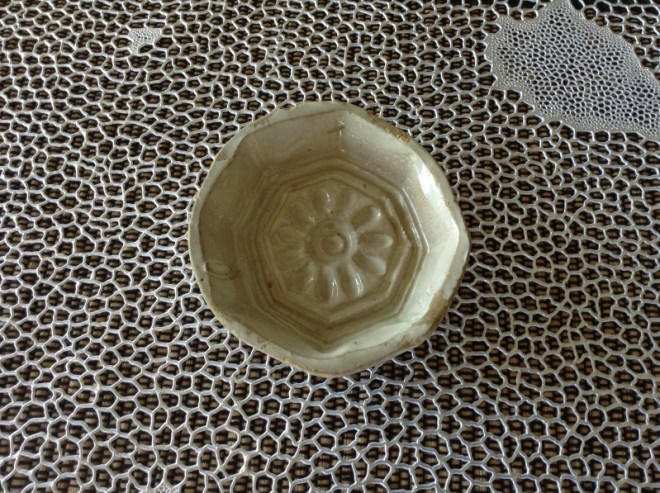I first wrote about prickly pears in a post dated Apr 15, 2009. The photo above was taken in the market of Siracusa (Syracuse).
This is an update of the post and I have added a recipe for a paste made with prickly pears (Mostarda di fichi D’india): March 5, 20015 .
Whenever I purchase fichi d’india (literally figs of India), I find myself telling others about the delights of eating prickly pears, but most importantly how to handle and peel them; I should set myself up at the Queen Victoria Market and give advice to the customers.
The fruit can be yellow, purple or red and ripens in late summer and in autumn. Use tongs when selecting your own fruit (store /stall holders should have those available) or wrap your hand in plastic or a paper bag because the fruit is covered with small, almost hair like spines that penetrate the skin, and stay there.
Sicilians love them and those of you who have travelled to Sicily would have seen them growing all over the countryside, eaten them after the meal in restaurants (as the cleansing fruit) and seen them for sale from the back of trucks on roadsides and in markets. They also grow in Calabria and in Puglia (all in the South of Italy).

Once peeled, eat the fruit raw. They are full of seeds (edible) and many non Sicilians may not like them but they really are worth trying. My aged Sicilian aunty who lives in Ragusa always warns me not to eat too many – apparently the seeds can group together and form a lump in the bowel causing constipation.

The photograph should be self explanatory, but just in case here is what to do:
Place the prickly pears in a bowl of water to clean – this also helps to remove some of the spines. My father used to soak them in water overnight but I do not think that this is necessary.
Remove the fruit with tongs.
Place on a plate. Use a fork to hold the fruit while peeling.
Use a sharp knife and cut off each end of the fruit.
Make one long vertical slice down the body of the prickly pear.
Peel back the thick fleshy skin with the use of the fork and knife that’s wrapped around the prickly pear. Discard the skin.

Mostarda di Fichi D’india
Like quinces prickly pears can be made into a paste (called mostarda) See: Mostarda and Cotognata– Sweets shaped in molds / moulds (spelling depending where you come from(. The Sicilian molds are ceramic shapes, called Formelle.

Peel the prickly pears and crush them with a fork. Place them into a saucepan.
Heat them over moderate heat until they boil – the prickly pears will be more liquid. Strain the mixture through a colander (with small holes) to remove the seeds.
Cool the mixture.
Add some vanilla, sugar, some Marsala, grated orange peel, ground cloves and ground cinnamon (all to your taste). Some also add a few almonds to the mixture.
Add 100 g of cornflour per litre of juice – do this slowly, a little bit of flour at a time and make sure that there are no lumps. You may need a whisk or a blender.
Cook on low heat, stirring often until the mixture thickens into a thick paste to the consistency of a thick custard or polenta. Pour into moulds. Leave overnight.
Take them out of their moulds, place them on a wire rack and dry in the sun for 2-3 days. Turn them over often and bring indoors overnight.
Store them in a dry cardboard box with a few bay leaves (fresh or dry). The surface of the mostarda will become covered with a light and fine white coating of sugar – this means that they are now dry and can be stored in a well sealed ceramic or tin container.
The photo below was taken in Siracusa in a shop called Il Mago Delle Spezie. Because of their dark colour these are likely to be mostrada made with grape must (vino cotto).
Weekend Herb Blogging.
On this site bloggers can post information about any herb, plant, fruit, vegetable or flower – I submitted my information about prickly pears to the host for the week: The Cabinet of Prof Kitty.


